Part of a series of articles titled Teaching Engaged Citizenship.
Article
(H)our History Lesson: Teaching Engaged Citizenship, The Judicial System
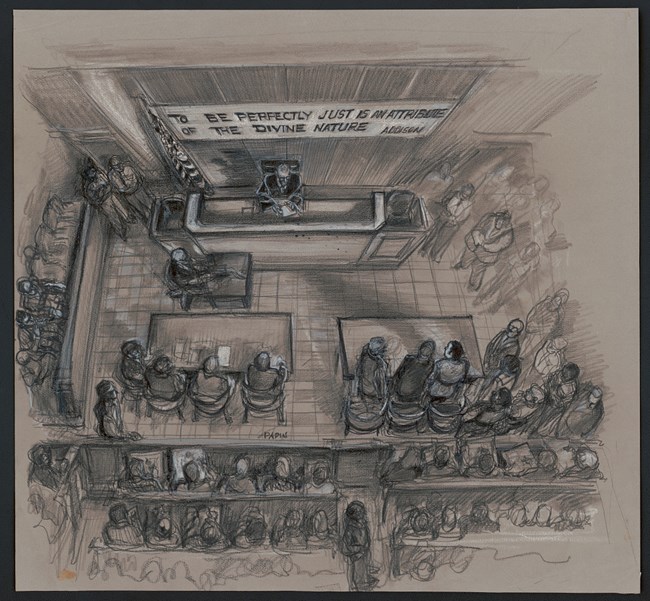
This lesson was written by Talia Brenner and edited by Katie McCarthy.
Grade Level:
This lesson is intended for middle school learners but can easily be adapted for use by learners of all ages.
Lesson Objectives:
Learners will be able to...
-
Understand the different levels of the Judicial System.
-
Research your local court system.
-
Determine the central ideas or information of a secondary source and provide an accurate summary of the source.
Inquiry Question:
What do you see in this picture? What do you think is happening? What does it make you wonder?
Reading:
You probably already know about the Supreme Court, the highest court in the United States . And perhaps you have heard about people in your community going to local courts. But you might not know that between those two institutions is an extensive court system with many different levels.
There are two main sides of the court system: the state side and federal (national) side. Both sides have multiple levels of courts. Federal courts deal with cases that involve federal law, while state courts deal with cases that involve state laws. On the state side, the lowest level are local courts. The local court system handles issues like traffic violations, divorces, and local crimes. Most of these cases are resolved in local courts. Sometimes, though, the people involved in a local court case will appeal the decision, which means that they ask a higher-ranking court to look at the case themselves. When this happens, the case moves to what is called a court of appeal. The highest level of appeals court in each state is the state Supreme Court, which has the final say in that state.
The federal side of the court system only deals with cases that involve federal laws. Common examples of federal cases are immigration cases, lawsuits between two people who live in different states, and federal drug crimes. Only a small percent of all law cases in the United States are in the federal court system. The lowest level of federal courts are district courts. There are 94 district courts in the United States. Like state cases, federal cases can be appealed up to courts of appeal. There are 13 federal appeals courts, or “circuit” courts.
The U.S. Supreme Court is the final court of appeals for both the federal and state sides of the court system. The Supreme Court is “the highest court in the land,” which means that its decisions are final and cannot be appealed any further. The nine judges on the Supreme Court, called “justices,” are not required to hear all the cases that are appealed to them. In fact, the Supreme Court only hears about 1% of requests. When the Supreme Court decides not to hear a case, the decision of the lower court who last heard the case remains in place.
Though high-ranking courts mostly hear appeals, there are times when a case will start at a high-level court. One example of this is the 1998 case New Jersey v. New York, about which state owned Ellis Island. This case went directly to the U.S. Supreme Court because it was a dispute between two state governments.
Most court decisions in the United States do not affect more people than those who are directly involved with the case. Sometimes, though, a court decision will change an entire law. One example is the 1967 case Loving v. Virginia, which was appealed up to the U.S. Supreme Court. All nine justices agreed that Mildred and Richard Loving, an interracial couple, could legally marry in the state of Virginia because Virginia’s ban on interracial marriage went against the U.S. Constitution. As a result, the many states who had similar bans could also not continue to prevent interracial marriages. Loving v. Virginia is one example of the wide effect that a court decision can have.
Because of the effectiveness of some court cases, activists will use lawsuits to try to change the law. Many people in U.S. history have used this process of litigation. Of course, anyone attempting to change the law through the court system can fail if the court does not agree with them. The litigation process is also long and can be expensive. When it is successful, though, litigation is a powerful way to create change. Unlike other ways of changing the law, litigation does not require support from lawmakers. So, the U.S. Supreme Court can make a ruling that would not pass as a bill in Congress. Legal cases also set “precedent,” which means that a court’s decision in a case is supposed to influence future courts in their decisions.
Discussion Questions:
-
How is the federal court system different from state court systems? How is it similar?
-
What is an example of a case that would begin in a federal district court? Why would this case not begin in a state court?
-
What is an example of a court case that results in a law being changed? What is an example of a court case that does not result in a law being changed?
-
Why is litigation an effective way to change the law?
-
How does the Supreme Court “check,” or limit, the power of the president and Congress?
Activities:
In each of the activities below, learners research the ways in which the judicial system impacts individuals in their community. Educators should choose one of the following activities to complete with their participants.
Activity 1: Researching How Crimes are Classified
The classification of different crimes in the United States is not set in stone. Certain offenses have been classified differently at different times. For instance, extreme animal cruelty only became a federal offense, instead of a state one, in 2019. Have students research a current effort to reclassify an offense, working either individually or in small groups. Possible topics include:
-
Making lynching a federal crime
-
Making crossing the border between ports of entry (crossing illegally) a civil offense, not a crime
-
Making nonviolent drug offenses misdemeanors instead of felonies
Using credible online sources, students should find three reasons that people have given in support of reclassifying the offense. Possible sources include (but are not limited to) news articles, nonprofit organizations’ publications, and quotes and press releases from politicians. According to activists, what is the main problem with the existing classification? What positive effects do they believe that reclassification would have?
Have students share their findings with the class. For an extended activity, students could create a brief video, infographic, or listicle to educate a general audience on this proposed change. Remind students to only include the most important information and to explain concepts that some people may not understand. As a follow-up activity, students could circulate their projects online to educate others in their school or larger community.
Activity 2: Researching Your State Supreme Court
Every state, district, and territory in the United States has its own Supreme Court. (If you live in New York or Maryland, the highest court in your state is called the Court of Appeals instead). Using the internet, have participants research the answers to the following questions. Make sure that students use credible online sources.
-
How many judges serve on the court?
-
How do judges join the court?
-
How long are the judges’ terms?
-
What is a case that the court has decided? Describe in a few sentences what the case was about.
-
What is an interesting fact about the court or any of its current judges?
Wrap-up:
-
Why might the way our court system be structured matter to you or the people around you, like your family, friends, or community?
-
How do you think this court system helps or hurts people bringing cases to court?
-
What does learning about the judicial system make you wonder or want to learn more about?
Additional Resources:
United States Courts
The United States Courts website has excellent educational activities about Supreme Court precedents, including mock trial activities. The website also has a list of Supreme Court cases that are particularly applicable to young people.
National Archives
The National Archives’ website has lesson plans relating to the judicial system. These include the lesson plan, “Congress Creates the Federal Court System,” for middle/high school audiences, as well as other lesson plans about the separation of powers at the federal level.
The website also has the full text of the Constitution and its amendments, in addition to photographs of U.S. founding documents.
The Judicial System in History
-
 Brown v. Board
Brown v. BoardLearn about the landmark U.S. Supreme Court case that declared segregation in public schools unconstitutional.
-
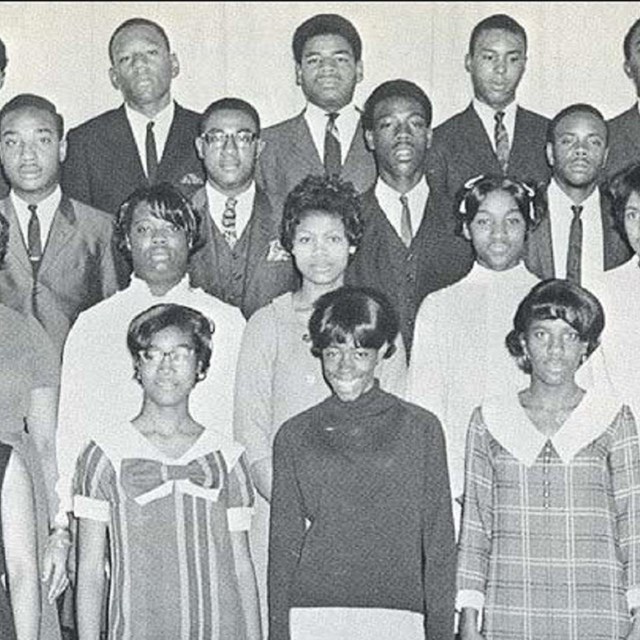 New Kent School and Watkins School
New Kent School and Watkins SchoolLearn about the U.S. Supreme Court case that forced the integration of public schools.
-
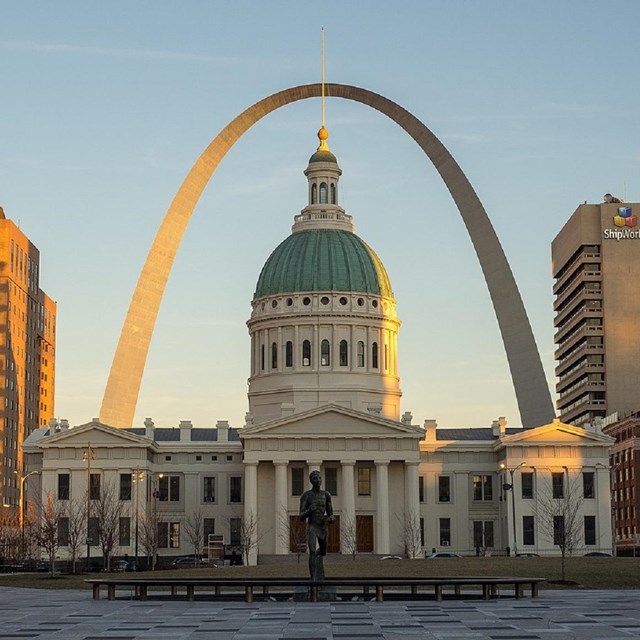 The Old Court House in St. Louis
The Old Court House in St. LouisLearn how how a legal verdict – the Dred Scott Decision – can affect national policy.
-
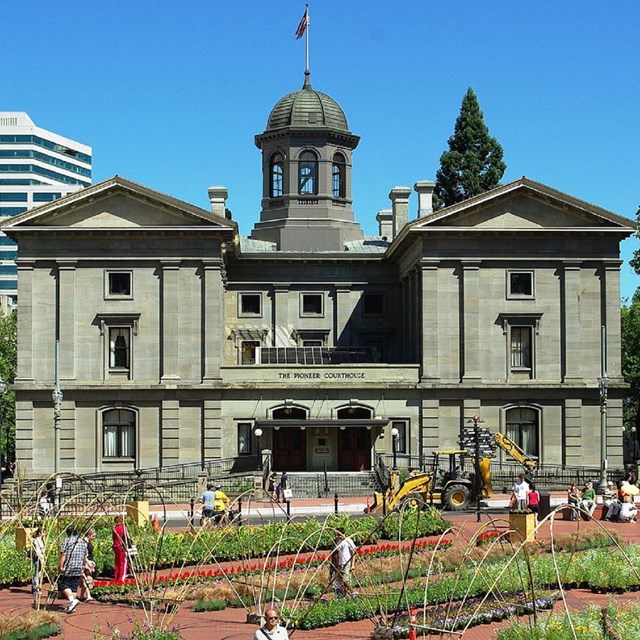 Federal Courthouses and Post Offices
Federal Courthouses and Post OfficesLearn how buildings restored and maintained by the U.S. General Services Administration illustrate the importance of the federal government.
-
 Separate But Equal?
Separate But Equal?Explore South Carolina's fight over school segregation.
-
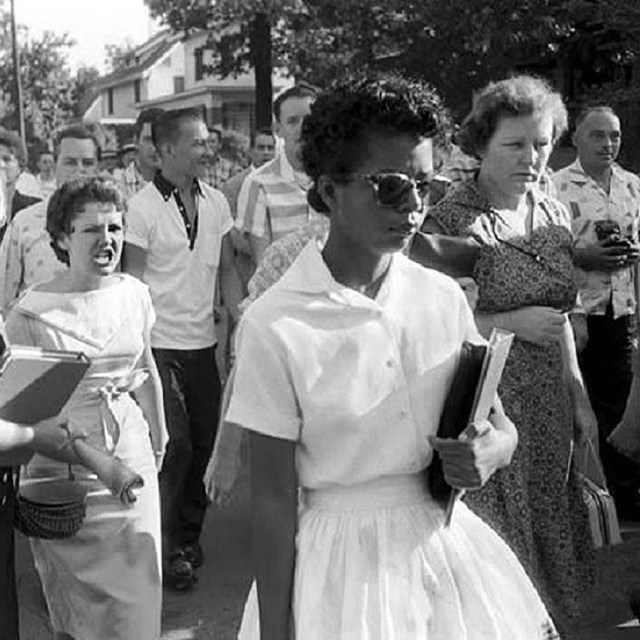 From Canterbury to Little Rock
From Canterbury to Little RockUnderstand the magnitude of the struggle involved in securing equal educational opportunities for African Americans.
Last updated: July 31, 2023
